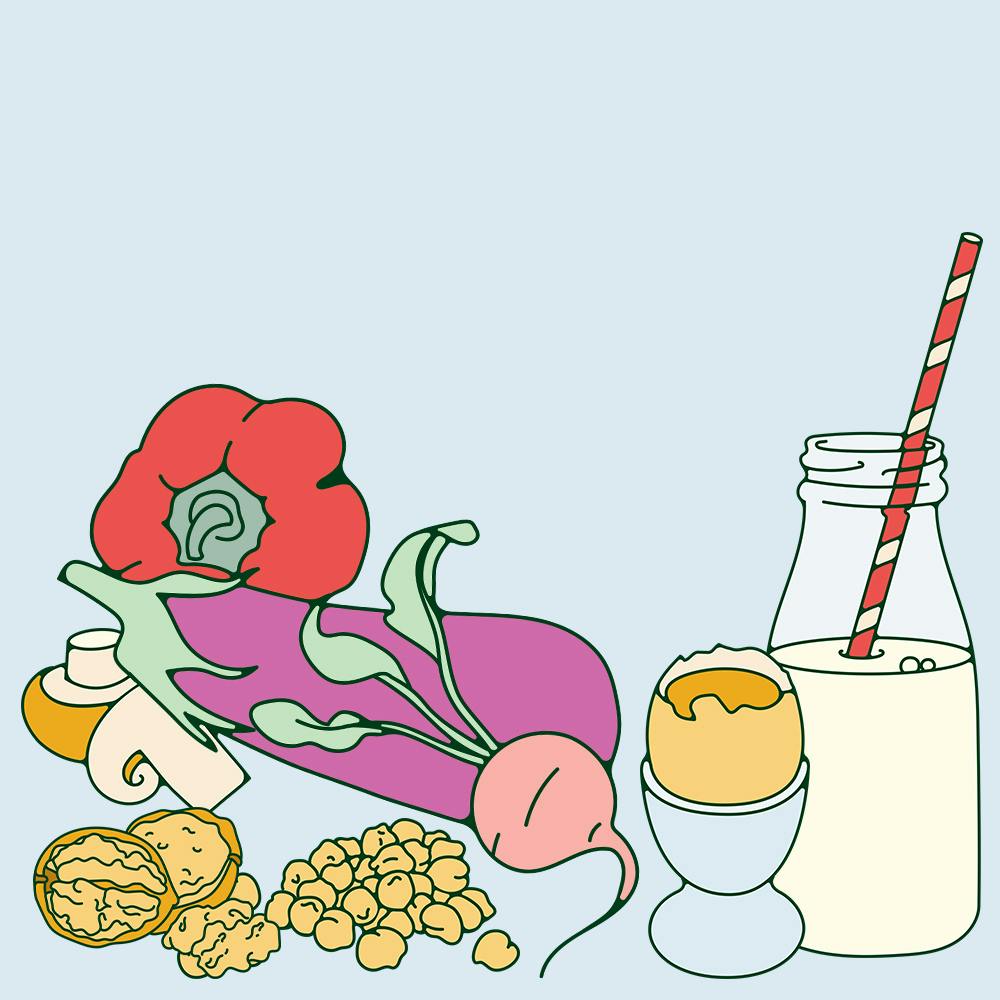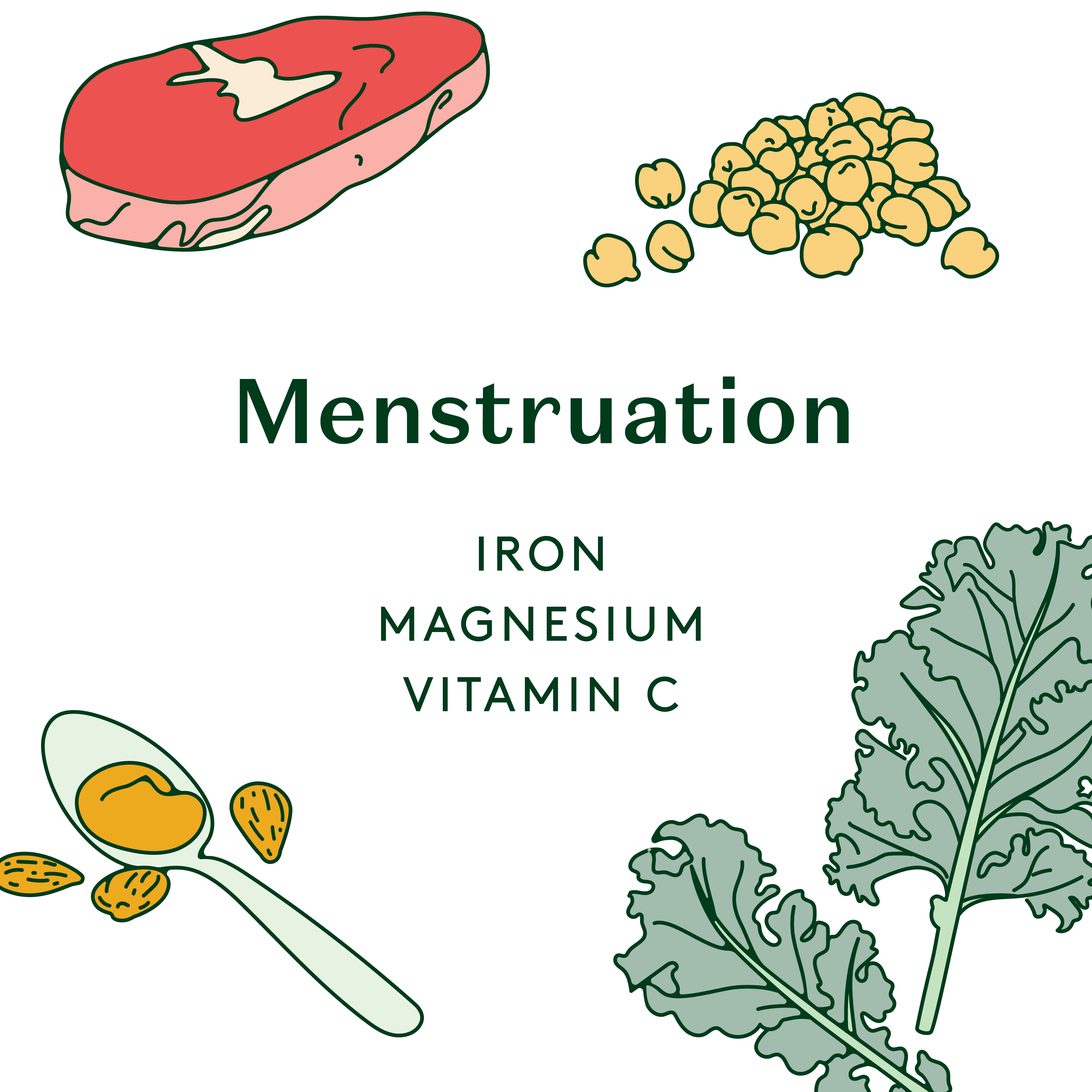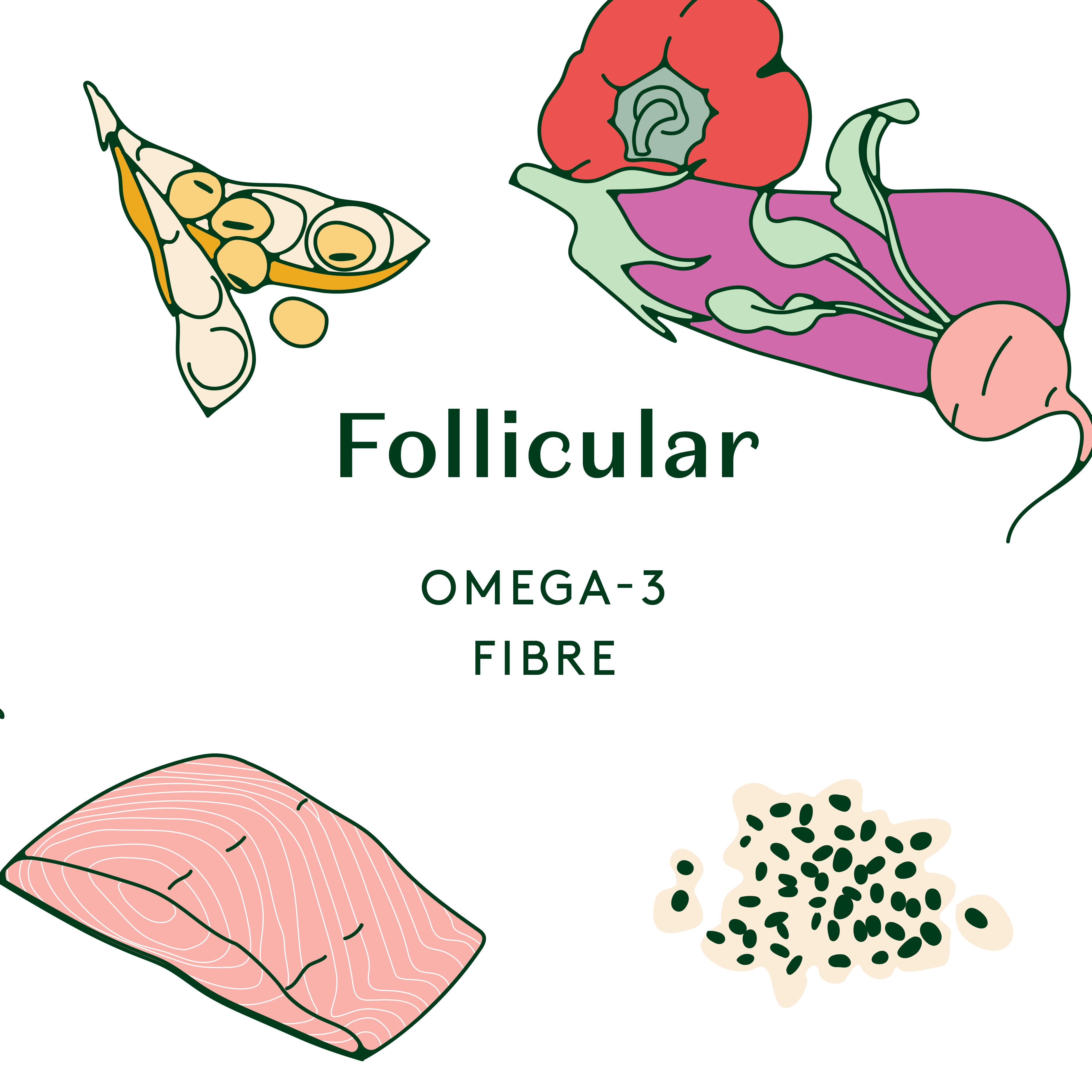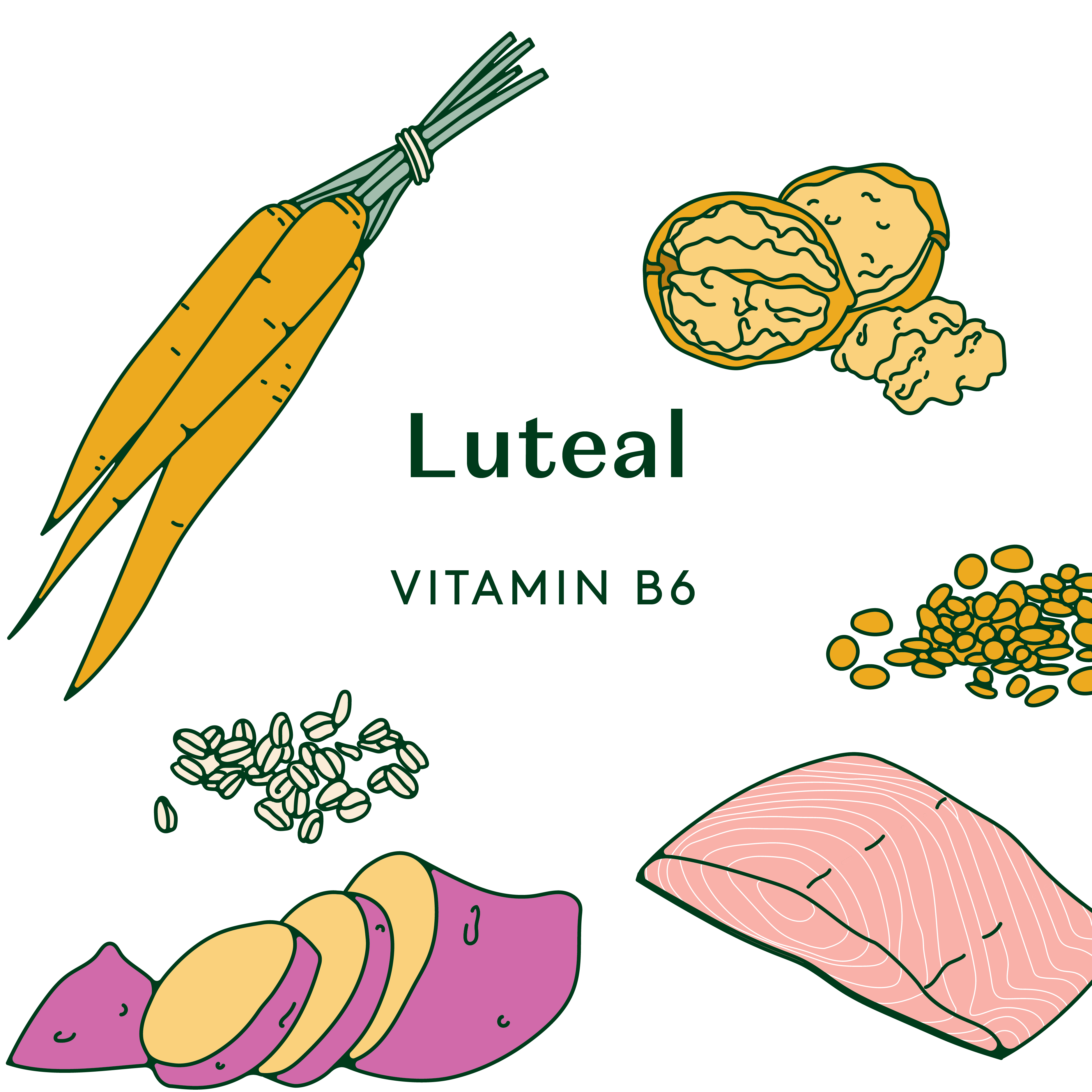Food is a vital component to overall health, which in turn can impact your menstrual cycle. What you eat during each phase of your menstrual cycle can have a powerful effect on how you feel, physically, mentally and emotionally.
Nutrition and your menstrual cycle complement each other more than you’d think, and certain foods could potentially help reduce and manage some of the symptoms that you might feel during each phase.
Before I break down the best foods to eat for each phase, it’s worth stating that these foods are helpful all throughout the menstrual cycle, and that periods and nutrition are very subjective.
The following are simply useful tips to keep in mind! We’re not here to tell you what to eat and what not to eat, because diet culture and health fads have done that enough…
Menstruation
Most of us associate our periods with a time of misery, exhaustion and moodiness, but it doesn’t have to be that way (really!).
It’s natural to have a bit less energy and to feel a few aches and twinges at this time. Nutrients can be a great tool to boost our energy levels, improve mood and reduce pain and cramps.
Key nutrients: iron, vitamin C & magnesium
Iron plays an important role in energy production, oxygen transport and blood rebuilding, which is important during menstruation as we can lose anywhere between 50-80mL of blood.
There are two types of iron that comes from food: heme and non-heme iron. Heme iron, which typically comes from animal products such as grass-fed beef, ox and lamb, is easier for the body to absorb and then re-use.
Non-heme iron, which comes from plant-based sources, is able to be used by the body, but here’s the thing: you need to eat a lot more of it and pair it with vitamins C to increase absorption.
Chickpeas, lentils, quinoa, kidney beans and kale are lovely plant-based sources of iron, so squeeze lemon over your quinoa salad or add berries into your kale smoothie.
Magnesium is nature’s relaxing mineral so it’s amazing for calming down period cramps and aches and has been shown to potentially help balance mood as well.
Leafy green vegetables like kale, rocket, watercress and spinach are a great way to get more magnesium into your daily diet. If you’re not up for more vegetables, pumpkin seeds and almonds also have a lot of magnesium, so spread some almond butter on some sliced banana for a sweet treat during your period.
Follicular
During the follicular phase, we might feel as though we’re emerging back into the world, with lots of energy and a more positive frame of mind.
Our oestrogen levels begin to increase again and our pituitary gland releases follicle stimulating hormone (FSH) to prepare one of the ovaries to start maturing the follicles that will eventually turn into a mature egg.
Rising oestrogen thickens the lining of our uterus and in the last few days of the follicular phase, rising testosterone gives you a glowy look, a higher libido, more energy, strength and motivation.
Key nutrients: omega-3 fatty acids & fibre
There’s a lot happening during this phase and food can help give our bodies the boost it needs.
Omega-3 fatty acids play a vital role in the structure and function of cells, and they do a lot during this phase. They help support skin and hair health and they also support oestrogen and testosterone production. These hormones are made from fats (cholesterol), and we need to eat fats to make fat. Focus on foods such as flaxseed, algae and oily fish such as wild salmon, sardines, anchovies, mackerel and herring for healthy omega-3 fatty acid sources.
Fibre is always an important part of a healthy diet, but most of us don’t eat enough of it. Fibre is even more important during the follicular phase because it helps us poo regularly—yep, we’re talking about period poo! Pooing everyday is really important because this is how our body gets rid of the hormones that our body has used and our liver has broken down.
For some women, constipation typically happens in the luteal phase, however other women with gut issues such as IBS can experience chronic constipation all throughout their cycle.
The issue with constipation is that when this happens, we’re not excreting the oestrogen that have been broken down and detoxified by the liver. This means that these hormones can potentially get recycled back into the body, which can lead to higher levels of oestrogen. Get your fibre through eating at least 7 portions of vegetables and a few pieces of fruit each day.
Ovulation
During ovulation, we’re at the peak of our menstrual cycle. We are at our brightest, most energetic, feeling sexy and beautiful, with lots of motivation to get things done.
In this phase, our oestrogen peaks, with luteinising hormone (LH) triggering ovulation. This means that one of your ovaries releases a mature egg and your progesterone levels start to rise too as your body hopes to fertilise an egg this cycle. Ovulation tends to happen roughly 2 weeks before we menstruate. If we don’t fertilise an egg this cycle, we move into autumn, otherwise known as the luteal phase.
Key nutrients: vitamin D & zinc
Vitamin D-rich foods such as mushrooms, salmon, sardines, milk and eggs are great to boost the immune system and prepare for the next phase of your cycle. In fact, in those diagnosed with PMS, vitamin D supplementation has been shown to decrease the severity of symptoms, such as depression and fatigue, which can commonly show up in the luteal phase.
Zinc is an important for supporting healthy ovulation and progesterone production. Red meat is a great source of zinc but if eating meat isn’t your thing, you can get zinc from pumpkin, sunflower and sesame seeds, egg yolks, ginger, seafood (oysters!) and dairy.
Luteal
This part of the menstrual cycle can be split into two parts. During the early luteal phase, we’re still feeling good. Progesterone is at its peak and oestrogen is also still high, so we’re calm and loving life.
In the second half of the luteal phase, if we haven’t fertilised an egg, oestrogen and progesterone levels begin to drop. This is when many of us start to experience PMS symptoms like mood swings, sore breasts, acne, headaches, bloating, and anxiety.
Key nutrients: healthy fats & vitamin B6
Good mood and skin foods are key during this phase! Healthy fats such as avocado, wild salmon, sesame and sunflower seeds support skin health and prevent the breakouts that are so common during this time.
Vitamin B6 supports healthy progesterone levels, which can help if you suffer from mood swings right before your period. You can get vitamin B6 from a wide variety of foods including organic red meat, carrots, sweet potato, lentils, oats, wild salmon and walnuts.








